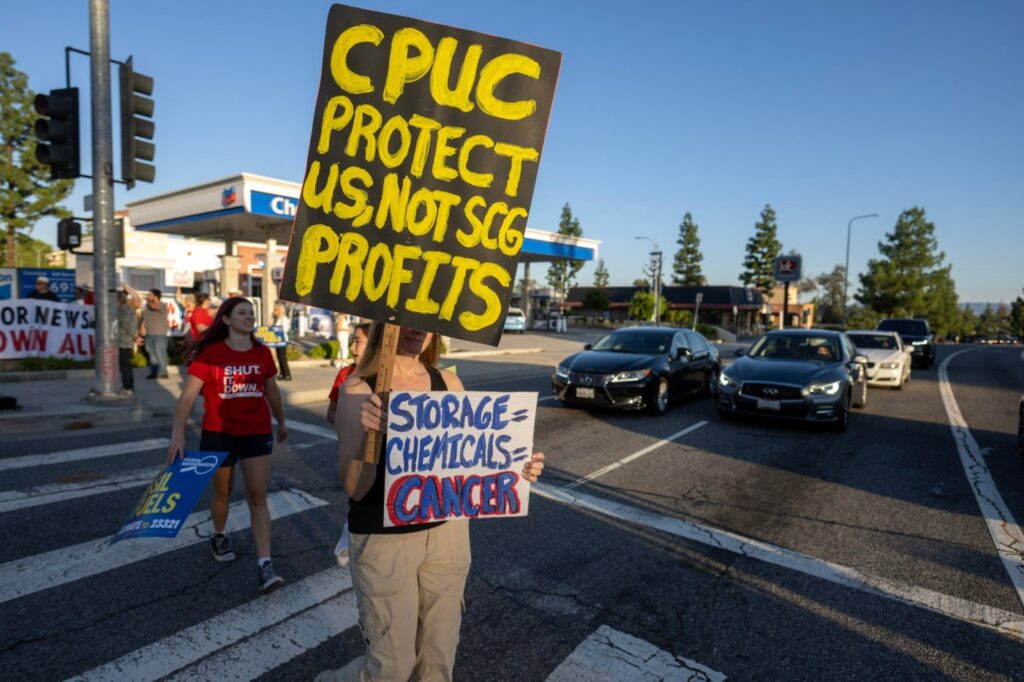
Electric bill shocking? Natural gas bill igniting a slow burn? Folks love to blame all that on the California Public Utilities Commission, which critics say has rarely met a rate increase it didn’t like.
The state auditor isn’t quite that harsh, but the watchdog agency’s probe of the CPUC and its in-house Solomon-the-Wise/Protector-of-the-People, the Public Advocate’s office, finds weaknesses in their oversight of California’s utility monopolies.
“Our assessment focused on electricity and natural gas rate increases, and we determined that the CPUC and Cal Advocates need to strengthen their monitoring of utilities’ costs, and the CPUC needs to provide greater transparency when authorizing rate changes,” said California State Auditor Grant Parks in a report to the governor and legislature released Tuesday, Aug. 29.
“(B)oth agencies can better protect customers by implementing certain improvements to their oversight.”
All charts by the California State Auditor
The auditor looked at rates for California’s Big Four utilities: Southern California Edison, the Southern California Gas Company, Pacific Gas & Electric and San Diego Gas & Electric (SDG&E).
The rates for all four have been rising, and regional electricity rates are among the highest in the nation. You already knew that, but here’s the skinny in black and white. Over the course of 2022:
Electricity rates for each of the three utilities jumped between 16% and 23%.
Natural gas rates skyrocketed between 27% and 162%.
Wildfire mitigation contributed to rising electricity rates, as did more people opting for rooftop solar. (Fixed costs to deliver electricity don’t change when folks buy less electricity, so higher rates are needed to recover those costs.)
The war in Ukraine pushed gas prices higher, as did an unusually cold winter and natural gas pipeline disruptions.
Utility operating expenses jumped 5% (SDG&E) to 37% (Edison) for the four utilities between their two most recently approved general rate cases. (The PUC grants rate hikes in so-called “general rate cases” every three or so years).
Last year brought on unexpected rate increases because actual costs were higher than the utilities anticipated. They needed to make up the difference.
The auditor said the PUC and Advocate must be more thorough and transparent. They “lack processes to ensure that utilities’ projected costs are not overstated.”
With gas rate hikes pending, and the war over changes to rooftop solar bill credits still raging, and a proposal to cover fixed electric grid costs based on income causing controversy, there’s no time like the present.
Weaknesses
Every few years, the utilities crunch numbers and ask the PUC for permission to hike rates to cover expected costs and provide a sufficient “rate of return” — i.e., profit.
Sometimes, though, profit turns out to be substantially more than what was projected. And no one really does anything about it.
For nine of the last 10 years, SDG&E earned more than the CPUC-authorized rate of return. “Reviewing how much the utility earned compared to the authorized rate of return and identifying where the utility was able to gain efficiencies should be a critical first step in ensuring that the utility’s projected costs were appropriate,” the auditor said.
“However, the CPUC and Cal Advocates lack a process to identify areas in which the utilities achieved cost savings.”
When the actual rate of return significantly exceeds the authorized rate of return, the CPUC should require the utilities to explain what happened and provide supporting documents. That information should be published and objectively analyzed, the auditor said.
Sometimes, utilities ask the PUC for rate increases to recoup unexpected costs, such as to prevent or clean up after wildfires. After those hikes are granted, though, little is done to ensure that the extra work was actually done.
“(I)f neither the CPUC nor Cal Advocates strengthens its efforts to verify whether the utility has completed the work in question… they risk allowing the utility to inappropriately recover costs from its customers that it did not, in fact, incur,” the audit said. “Such verification could involve, for example, site visits, photographic evidence of work completed, or satellite imagery.”
And sometimes, the CPUC speaks in a language folks just don’t understand.
“The CPUC also lacks an effective process for ensuring that utility customers are fully informed of the reasons their utility is raising their rates,” the auditor said.
“The CPUC neither clearly and comprehensively communicates the reasons for the cost increases it authorizes at the start of each cycle, nor has it established a mechanism to clearly communicate the reasons for rate increases that utilities seek midcycle. By not providing customers with that information, the CPUC neglects opportunities to improve the public’s understanding of why rates are increasing.”
And finally, Cal Advocates needs to monitor the utilities’ balancing accounts — the mechanism by which utilities track authorized and actual costs and revenues — to ensure that rate adjustments are warranted.
The CPUC and the Public Advocate’s office said they’ll do some of what the auditor suggests, though they object to this and that bit. (You can read their full responses at http://auditor.ca.gov/reports/2022-115/index.html).
“We understand the impact of rate increases on the lives of Californians,” said CPUC spokeswoman Terrie Prosper by email. “Our focus is making sure utilities provide safe, affordable services while looking out for families and individuals who depend on them.
“Transparency throughout this process is vital to us – we’re committed to keeping utility customers informed about our decisions. We value the California State Auditor’s work and the opportunity to build on our efforts.”
Edison, for its part, is still reviewing and digesting the report.
The rest of us, meanwhile, are bracing for the next round of rate hikes, which go to the CPUC for approval every three or four years. Until then, we’re shutting off the lights, because this electric bill is killing us.
Related Articles
Natural gas plants in Huntington Beach, Long Beach to stay open through 2026
SoCalGas to pay $175k over claims of ‘renewable’ natural gas, Bonta announces
